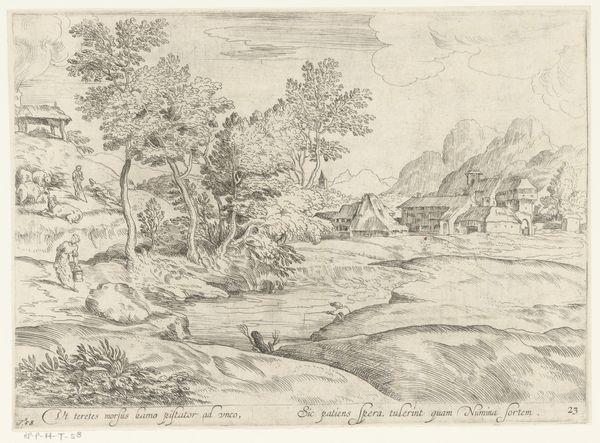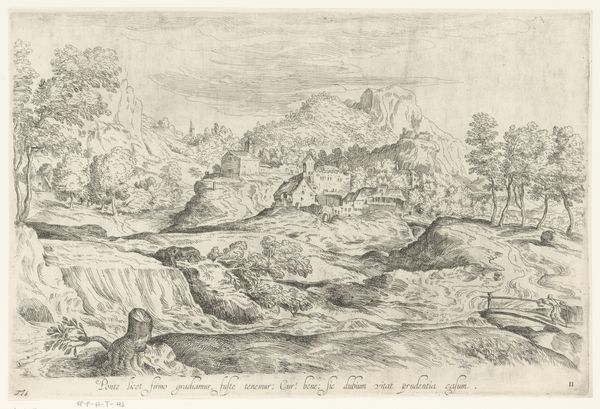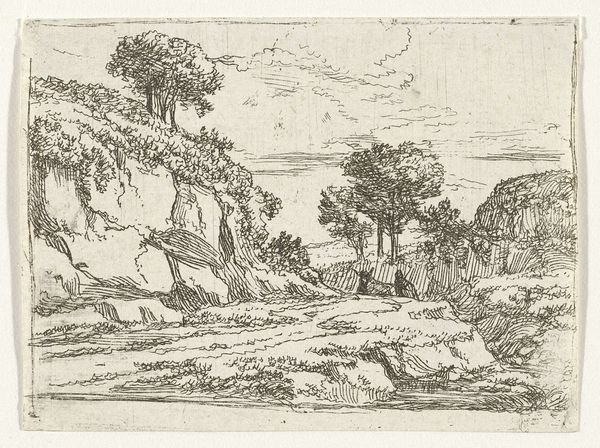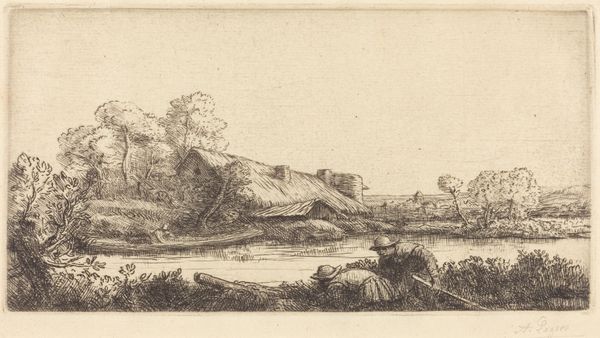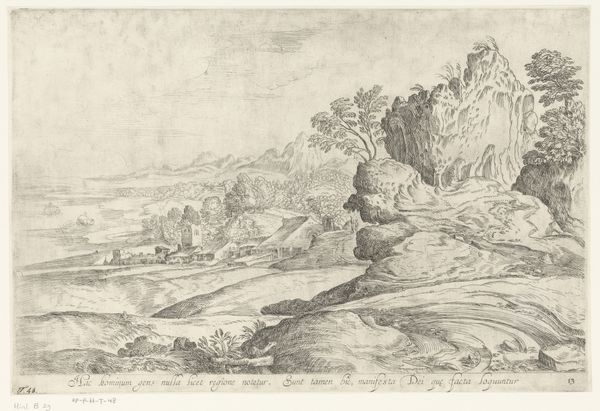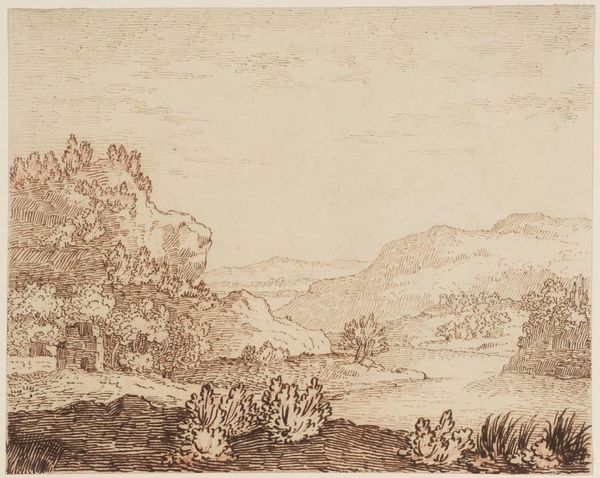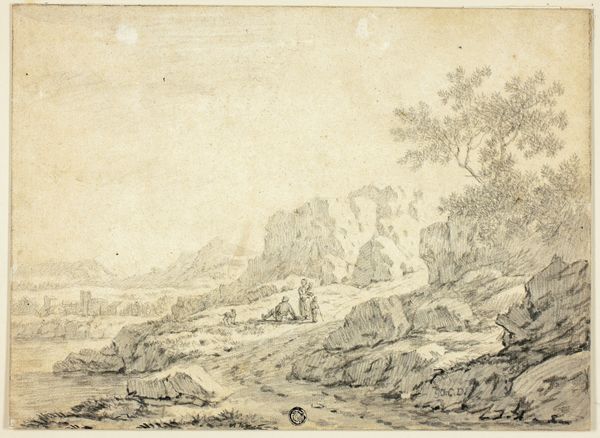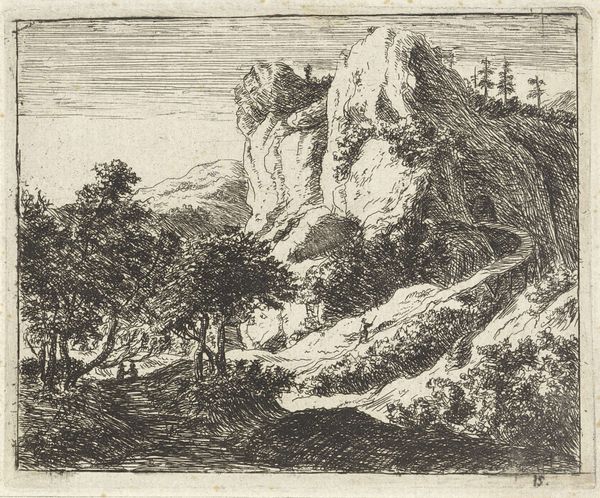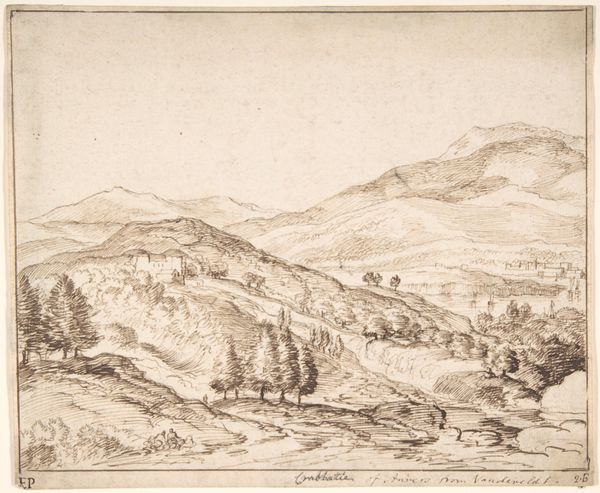
drawing, paper, ink, pen
#
drawing
#
baroque
#
dutch-golden-age
#
pen sketch
#
landscape
#
paper
#
ink
#
pen
#
genre-painting
#
realism
Dimensions: height 159 mm, width 211 mm
Copyright: Rijks Museum: Open Domain
Curator: This is "Mountain Landscape with a River," a drawing rendered in ink on paper, created sometime between 1636 and 1687 by Jacob Esselens. I am immediately drawn to the intricate textures; the rough, almost primal feel of the rocky outcroppings contrasted against the smoother expanses of the river and sky. Editor: The immediate symbolism that strikes me is that juxtaposition itself: nature's raw power and the quiet, reflective spirit of the water. But more than that, the presence of the small boats on the river signifies human interaction, and a striving for understanding or commerce between both realms, represented visually by these crossings. Curator: I'd agree. The etching itself provides tangible evidence of that relationship, the materiality. Think about it— the paper itself, likely linen rag based, processed, stretched, sized… then the artist taking pen to paper to build his drawing through layers of hatch marks. The labor itself reveals Esselens understanding of environment and culture. Editor: Labor, too, represented in the drawing of the timber, stacked at the bank. I am most fascinated by the way Esselens used his tools; each individual mark making up this sweeping composition gives the sense of this wild landscape and serene river working together—two archetypes meeting. It evokes the old idea of *the sublime,* even on this humble scale. Curator: What's equally compelling to me is Esselens' ability to translate light and shadow, using only line. It brings into question the ready availability of materials to create art. It begs a question, who had access to this creative pursuit, and how were works like these shared in Dutch society? These detailed material layers would have been immensely valued in contemporary trading and production settings. Editor: To extend that concept to culture at large: waterways in art have long represented journeys – both physical and spiritual, suggesting cycles of life, and interconnectedness. Think of classical mythos: the Styx. And also reflecting a collective psychological landscape. Do you see reflections like that echoed here, Curator? Curator: Perhaps. What Esselens shows, with so few simple materials, is just how accessible visual record and commentary could be, when even at a remove from centers of painting. Thanks for these compelling reflections. Editor: Likewise, Curator. A fitting example of how nature, artistic talent and commerce met in the Dutch Golden Age.
Comments
No comments
Be the first to comment and join the conversation on the ultimate creative platform.
